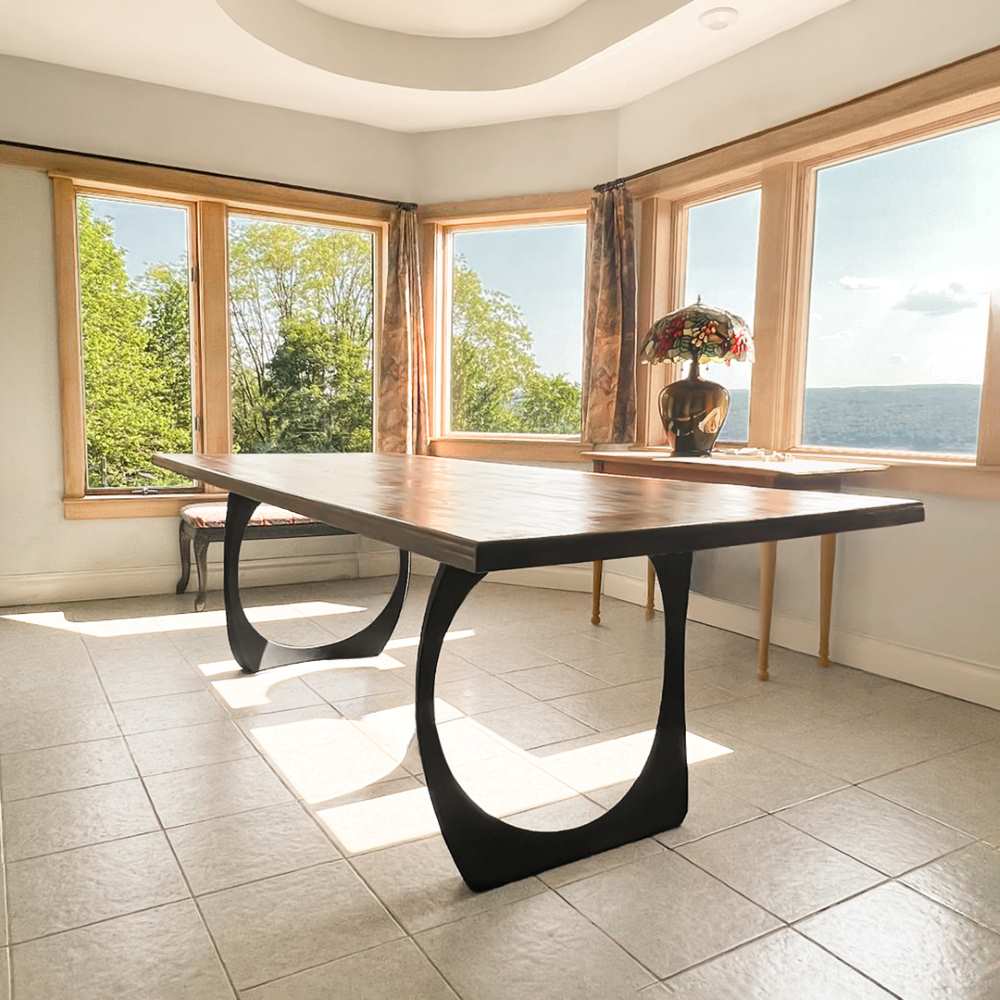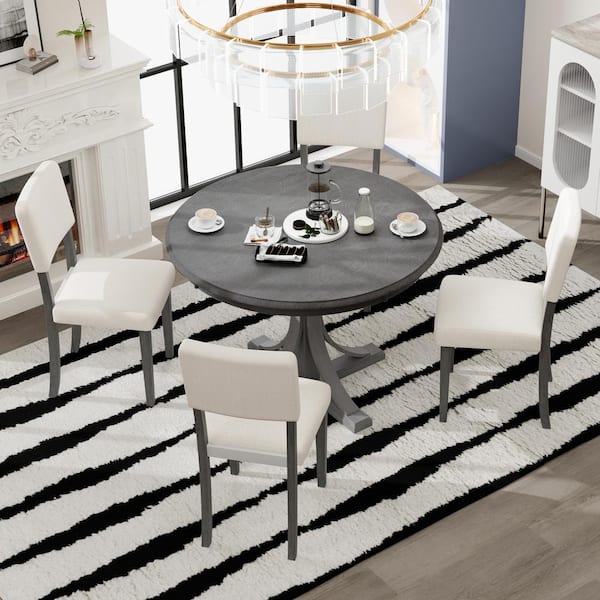Simple Steps to Replacing Old Dining Room Table Legs with New Ones
Wiki Article
From Conventional to Modern: Find the Suitable Eating Area Table Legs for Your Design
The choice of dining-room table legs plays an essential function in specifying the overall character of your area, linking the void between typical craftsmanship and contemporary aesthetic appeals. While classic styles such as cabriole and turned legs evoke a sense of classic class, contemporary designs like barrette and geometric options present a chance for striking visual interest. Examining the best balance in between these styles calls for a nuanced understanding of your existing décor and individual preference. As you think about these aspects, the inquiry stays: exactly how can you flawlessly incorporate these diverse leg designs to create a harmonious eating experience?Recognizing Table Leg Styles
The variety of dining room table leg designs can substantially affect both the visual appeals and capability of the room. Each leg design adds one-of-a-kind sensible attributes and aesthetic aspects, satisfying diverse design preferences and use demands. Understanding these designs is essential for choosing the right table that lines up with your overall interior decoration vision.For example, tapered legs offer a clean, traditional appearance that can boost a space's elegance, while stand bases provide security and make best use of legroom, making them optimal for smaller areas. Hairpin legs, a hallmark of mid-century contemporary style, present an industrial flair, enabling a ventilated, open feel. Likewise, trestle legs stimulate rustic appeal, offering robust assistance and a feeling of timelessness.
Wood legs can bring heat and appearance, whereas steel options often communicate a smooth, modern ambiance. Inevitably, comprehending table leg styles is crucial for producing a natural eating location that mirrors personal style while ensuring practicality and comfort.
Traditional Table Leg Options
When selecting dining-room table legs, typical choices usually personify ageless elegance and workmanship. These styles reflect a rich heritage and a commitment to high quality, making them suitable for those that value traditional aesthetic appeals.Among the most iconic standard leg styles is the cabriole leg, identified by its stylish bent shape. This design often includes ornamental carvings and is most generally found in Queen Anne and Chippendale furnishings. An additional prominent choice is the transformed leg, which boasts a collection of smooth, rounded forms that provide a classic look while preserving security.
In addition, the straight leg, while basic, offers a basic and strong structure that can blend seamlessly with a variety of tabletop designs. For those attracted to ornate outlining, claw-and-ball feet legs evoke a feeling of magnificence and can serve as a spectacular centerpiece in any kind of eating room.
Lastly, stand bases, although not purely legs, offer a different conventional choice that enables for enough legroom and can be magnificently carved. Each of these conventional leg designs contributes to the total atmosphere of an eating area, weding function with aesthetic appeal.

Modern Table Leg Layouts
Modern table leg designs use a diverse series of designs that stress tidy lines and ingenious materials. These layouts commonly focus on functionality while working as striking centerpieces within a dining room. Minimal appearances prevail, with legs crafted from products such as steel, glass, and crafted timber, which add to a modern and ventilated feeling.One prominent style is the hairpin leg, characterized by its slender, conical framework that provides stability without overwhelming the tabletop (dining room table legs). This design is often found in mid-century modern-day furnishings and can effortlessly match different dining table shapes. One more trend is making use of geometric shapes, where legs might tackle asymmetrical or angular types, adding aesthetic interest and a touch of artistry

Blending Styles for Special Areas
Often, homeowners look for to create special eating areas that show their individual style by blending different style aspects. This method permits the incorporation of varied appearances, resulting in an unified yet distinctive environment. Pairing a rustic wood table with streamlined, modern steel legs can create an attractive comparison that elevates the space's general allure.Furthermore, incorporating vintage table legs with modern table tops can evoke a feeling of background while keeping a contemporary sensibility. Such mixes not just display specific taste however likewise urge imagination, permitting property owners to curate an area that really feels both individual and welcoming.
Shade plays a critical function in this mixing process; picking table legs that match or comparison with the existing color pattern can improve aesthetic interest. Whitewashed legs can soften the daring of a Click This Link dark table surface area, creating a balanced aesthetic.
Tips for Choosing the Right Legs
Selecting the right table legs is crucial for accomplishing both functionality and aesthetic charm in your eating space. Begin by thinking about the total design of your space. Standard settings gain from legs that feature elaborate makings or transformed styles, while contemporary spaces might call for streamlined, minimalist styles.Following, analyze the height and security of the legs. dining room table legs. Typical table vary in between 28 to 30 inches in elevation, so guarantee the legs enhance this measurement for convenience. In addition, durable materials, such as hardwood or metal, can improve security and long life
Review the leg form as well-- options consist of right, tapered, or stand designs. Straight legs offer a timeless look, while tapered legs can include a touch of sophistication. Pedestal bases give ample legroom and are perfect for smaller spaces.
Final Thought
In summary, picking the optimal dining room table legs requires careful consideration of both typical and modern styles. By integrating leg design, elevation, and product with the general decoration, a cohesive and welcoming environment can be achieved.The variety of dining room table leg from this source styles can significantly affect both the appearances and performance of the space. Ultimately, comprehending table leg designs is crucial for developing a cohesive eating area that mirrors individual design while guaranteeing usefulness and convenience.One of the most renowned traditional leg designs is the cabriole leg, identified by its graceful rounded shape. Straight legs supply a classic look, while tapered legs can include a touch of beauty.In summary, picking the ideal eating area table legs calls for mindful factor to consider of Our site both modern-day and traditional designs.
Report this wiki page